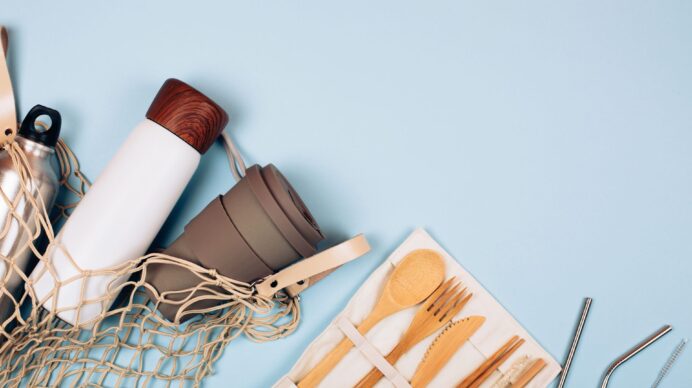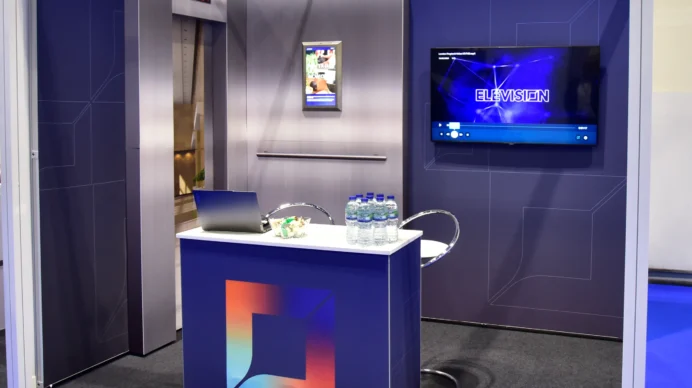Pop up retail experiences continue to drive growth for brands and awareness. From seasonal one-offs to mainstream launches, the pop-up shop is the semi-permanent retail solution that is one of the mainstays for reaching new audiences for retailers large and small. They’re a huge deal. Pop-up retail contributes more than £2.3 billion to the UK economy, a figure that demonstrates just how popular the pop-up shop has become as a retail outlet, especially in the current climate to provide flexibility and prove its viability as a profit turner for business.
But what is a pop-up shop? The pop-up shop comes under a type of retail practice known as flash retailing, and it occurs when a vacant storefront or other space is transformed into a short-term retail or sales space. Pop-ups have become an integral marketing and sales weapon in the retail arsenal, both for traditional brick-and-mortar stores and e-retailers, as consumers shop differently post-pandemic, specifically with more reliance on online purchases than ever before.
Consumer experience is everything. Happy, engaged consumers equal financial success – that’s business 101.
That’s why pop-up shops have such positive potential. Pop-ups are all about creating a one-off, unforgettable, and interactive experience for consumers that leave a positive brand image in their mind. There’s a lot more room for bold and creative engagement, as we’ve seen from some of the biggest retail brands.
A report compiled by Westfield predicts that by 2025, more store space will be dedicated to experiences rather than products – prompting an immense period of change for many major brands. In short, the retail industry is flipping upside down where searching via the online store of a brand is driving consumers into the physical store for final purchase instead of online shopping, or helping to find gifting ideas if shopping for others.
Pop-ups that last
The phrasing ‘long-term pop up’ can seem contradictory. But trust us, you need to know all about it.
With pop-ups becoming more and more integral to many brands’ wider marketing strategies, pop-ups are no longer contained to a two-day activation. Previous pop-up shops that may have been temporary are now being used for longer. Although previously pop-ups have been used to solve a variety of brand challenges, such as testing a new location, their popularity has substantially surpassed this one purpose.
Pop-up trends can change with different movements or directions taken by brands, whether that’s to meet the shifting needs of their audience or to reflect a societal trend, as we’ve seen with sustainability. Trends are ever-changing and are leading the way for the evolution of pop-up shops. Pop-ups that last longer are now becoming the next new trend. We can’t wait to see what these changes will bring to pop-up shops in 2023.
Pop-ups can now last for periods of 3 months, 6 months, 12 months, and beyond. The online make-up retailer Glossier, for instance, opened a pop-up store in London’s Floral Street with the intention of it closing after 2-months. Instead, due to overwhelming interest, the store is set to remain open until the end of this year and is said to be the brand’s most successful pop-up to date! Beauty brand Glossier is no stranger to the idea of hosting temporary shops and SWAS (store within a store) locations in different cities during pre-pandemic times. In fact, many of their retail spaces originally started out as experiential, temporary pop-up shops before becoming a more permanent location.
Before opening a permanent location in London, Glossier’s pre-pandemic pop-up had an extremely successful reception, welcoming over 100,000 visitors in only 10 weeks creating noise online amongst fans before the permanent store was opened.
The idea of a pop-up shop as an easy brand extension or opportunity to drive more revenue is undeniable. But why is another question? We take a look at the reasons why this strain of retailing has taken such a strong hold on the retail world and what type of businesses are likely to benefit from the concept most.
First things first – you need to figure out what type of event you’re having and understand what specifically makes that appealing to a pop-up shopper. There are a few common types of pop-ups:
- Press preview: Usually an invite-only/exclusive look at your shop for local journalists and bloggers who can help you spread the word about your store.
- Launch party: Pop-up shops make for great launch parties, whether it’s your pop-up debut or the launch of a new product line or exclusive products just for the party attendees. Remember, if you’re billing it as a party, you need to deliver on your promise. Consider hiring a DJ, serving food and drinks, and promoting social sharing to further your reach.
- Experiential: Entice visitors with immersive experiences they can’t get anywhere else. Think about what types of featured workshops, speakers, and individuals work best for your brand. Situ Live in Westfield is a perfect example of this and just celebrated its 1st birthday and perfect for brand activations for short periods.
- Influencer party: Tap into an influencer’s audience in your niche by allowing them to host, curate, and be the “star” for the night. Ask them to build anticipation before the fact by posting about it on social media and view the opportunity as a collaboration that ends up paying big dividends for both parties. They’re presented with a unique opportunity to do a meet-and-greet with their fan base—and their fan base becomes your customer base.
- Sponsored event: While even a one-off piece in the media can be advantageous, investing in a sponsored event can land you even more coverage. A partnership with a local magazine in your niche, for example, can provide you with the coverage before, during, and after your pop-up happens.
Flexibility to change up design
Unlike the permanency of traditional flagships and high street stores, pop-ups are all about creating temporary retail spaces with the right experiences. It goes without saying, then, that the nature of the retail space design often follows suit. That is, without being tied down to a permanent space, retailers can freely change up their design: a certain display layout for one pop-up space, then a different one for the next.
A modular display solution like T3 can be ideal for short-term, temporary retail spaces. Great for quick-fire installs and pull-outs, or indeed full-store fit-outs. Because it is compact, flat-pack, reconfigurable, and can be built and taken down without any tools, lots of different dynamic display configurations can be created quickly and easily and then taken down again in no time at all. Perfect for an evolving, dynamic, fast-fashion pop-up and a positive tick for your sustainability measures too as you repurpose where you can.
A great opportunity for start up noise
Of 500k + new UK businesses created each year, a third use pop-up shops to help their business take off (EE). That’s a substantial chunk. Some of the most talked about retailers today got their start in pop-ups, Gousto & Hello Fresh to name a couple, and whether it’s to allow brand trials and tasters as experiential or direct-to-consumer sales, it is only likely to grow as part of a brand’s marketing mix especially as retail shops stand empty as an impact of today’s economic challenges on our high streets, and landlords need ways to recoup that long term revenue.
It should come as no surprise that a huge portion of new businesses leverage pop-ups to help get their businesses off the ground. The very nature of pop-up retailing makes it a hyper-flexible, cost-effective route to market. With a pop-up, emerging businesses can refine their offering, gauge customer tastes, and generate buzz and brand awareness.
Likewise, for the more established small business, pop-ups offer a way to bolster sales with new product launches and try out new ideas or locations without the pressure that comes with a long-term lease.
Short-term rentals for lower costs
As we touched upon above, pop-up shops are a seriously cost-effective retail solution. Businesses can reap all of the benefits associated with traditional retail spaces – and more – but without breaking the bank. Often pop-ups are much smaller than traditional shops, which means smaller square space and thus lower rental costs.
Other overheads you can expect to save on include employee wages, inventory, and utilities. In short: pop-ups will leave you with more money in the bank to use in other ways, such as online marketing.
Limited availability boosts consumer demand
Unlike traditional stores that stay open on a long-term basis, pop-up shops are often only up and running for a limited amount of time. And that drives demand – in a big way. With a much shorter window of time to gain access to exclusive promotions, retailers can create a sense of urgency, driving foot traffic into the makeshift, physical retail space.
Capitalise on the holiday season & gifters
Plan your pop-ups around annual and seasonal holidays to maximise traction. Pop-ups are magnets for seasonal shoppers, with 61% of shoppers listing seasonal products as their main reason for frequenting pop-up stores.
The Best Pop-Up Shops To Visit For Summer 2022 (townandcountrymag.com)
Pop-up shop ideas
1. Take your store on the go
Can’t decide on where to hold your pop-up shop? Or maybe you’ve already held a successful pop-up store and are looking to take it on the road. Either way, outfitting an old food truck or moving van is a great alternative to the traditional brick-and-mortar store to reach more customers. It gives you the flexibility to expand awareness of your products in different areas, as well as with different demographics such as farmers’ markets or outdoor festivals, which are powerful ways to create an engaging brand experience, especially with a Gen Z audience.
2. Be exclusive – go invite only
It’s the most basic principle of human nature: everyone wants what they can’t (or might not be able to have). So go exclusive, create some hype and watch the buzz about your pop-up shop skyrocket. By sending out invites to a set number of people, you can also control your crowd numbers to ensure a pleasant experience in the store.
We’re not saying that the entire lifespan of your pop-up shop needs to be invite-only, but restricting it to invite-only guests for a limited time is a popular marketing strategy that can spread the word about your business and then encourage in your longterm potential customers.
3. Get creative with structure
Whoever said that your pop-up venue must be a traditional brick and mortar – and may we say unoriginal structure — was sorely misled. There is nothing traditional about pop-up shops, so there is no reason to feel confined to a traditional retail store layout when choosing your locale. Get creative and open up a shop in something industrial like a recycled shipping container. With a little bit of creativity (and a tool belt), the possibilities are endless, T3 can also help here by creating the look and feel of a creative space but with the practicality of a modular display piece so you can customise and repurpose it with ease.
4. Entice with the senses
Have you ever gone into a bath store just to smell the perfume? Or how many times have you gone to your neighbourhood bakery when you know they are giving out samples? Delicious smells and yummy tastes translate into foot traffic, so take advantage of this knowledge! Whether you’re a boutique that’s flung its door wide open and smells of delicious vanilla-scented candles, or a bakery tempting passers-by with delicious goodies, enticing customers will not only draw them into your pop-up store but will create a warm and inviting environment they’ll pass along via word-of-mouth.
Better yet, consider complementing your pop-up retail space with pop-up food or snacks to create a memorable experience for your audience.
5. Pick a hot location
Maybe you’ve scoured the streets looking for your ideal location, or perhaps what you are looking for is so unique that no location exists. Either way, whether it’s out of necessity or creativity, popping up shop outside the confines of the traditional is completely in line with pop-up culture. One way to be imaginative is to host your shop inside another store.
This is not only a great way to attract customers from the get-go, but can also act as a great way to introduce your store (and yourself) to a community. Just make sure that when you approach a store to host your shop, you aren’t choosing a potential competitor or a business that isn’t likely to attract your target consumers.
6. Get a space outdoors
As long as Mother Nature allows, pop that shop up in the great outdoors! We don’t recommend this as a long-term solution, but the charm of hosting your store in the town’s gazebo might just be too quaint to pass up, especially for a seasonal portfolio. Just make sure that if you wind up hosting your shop on public property you obtain any (or all) necessary permissions from the local council/highways etc.
7. Give away freebies
Free samples/merchandise is the key to a customer’s heart and an essential part of pop-up marketing. Make sure that what you’re giving away doesn’t decrease your profits so much that it hurts your bottom line. You also need to make sure that what you pass along to your patrons feels like a solid value. Taking both of these points into account, giveaways might not be sensible for all stores, maybe a gift for just the first 20 or 30 customers is feasible.
Make sure you get the most out of your pop-ups, product launch or in person experiences and create a display environment that’s quick, easy, and versatile. The T3 display system is our innovative display solution, engineered to work perfectly within the pop-up environment, as well as other retail environments. Why not explore more and see how we can help with your marketing requirements.
From fad to mainstream, the pop-up shop is the semi-permanent retail solution that has quickly become a mainstay for retailers large and small. They’re a huge deal. In fact, pop-up retail contributes an impressive £2.1 billion to the UK economy, a figure that both demonstrates just how popular the pop-up shop has become as a retail outlet and proves its viability as a profit turner for business.



